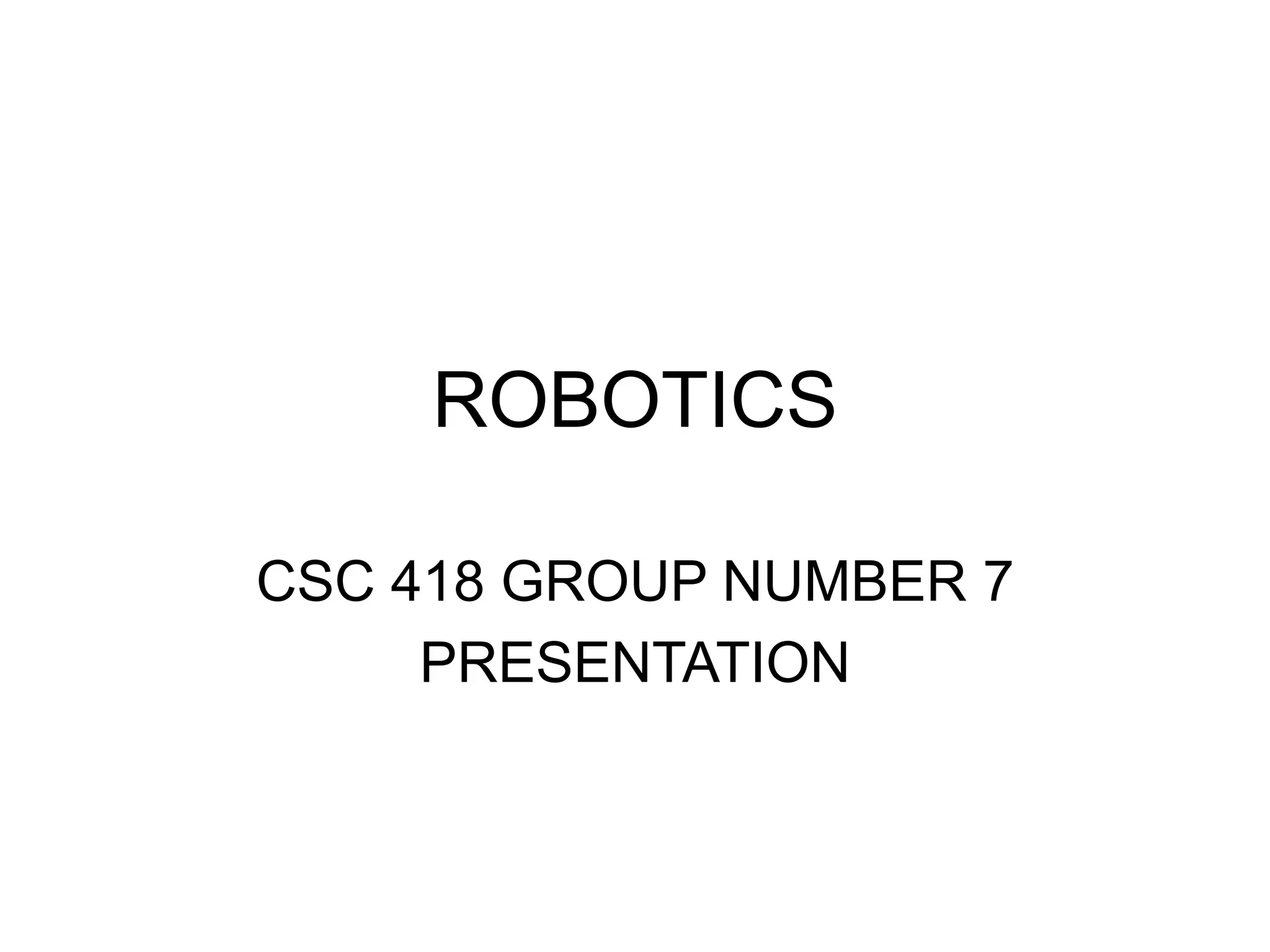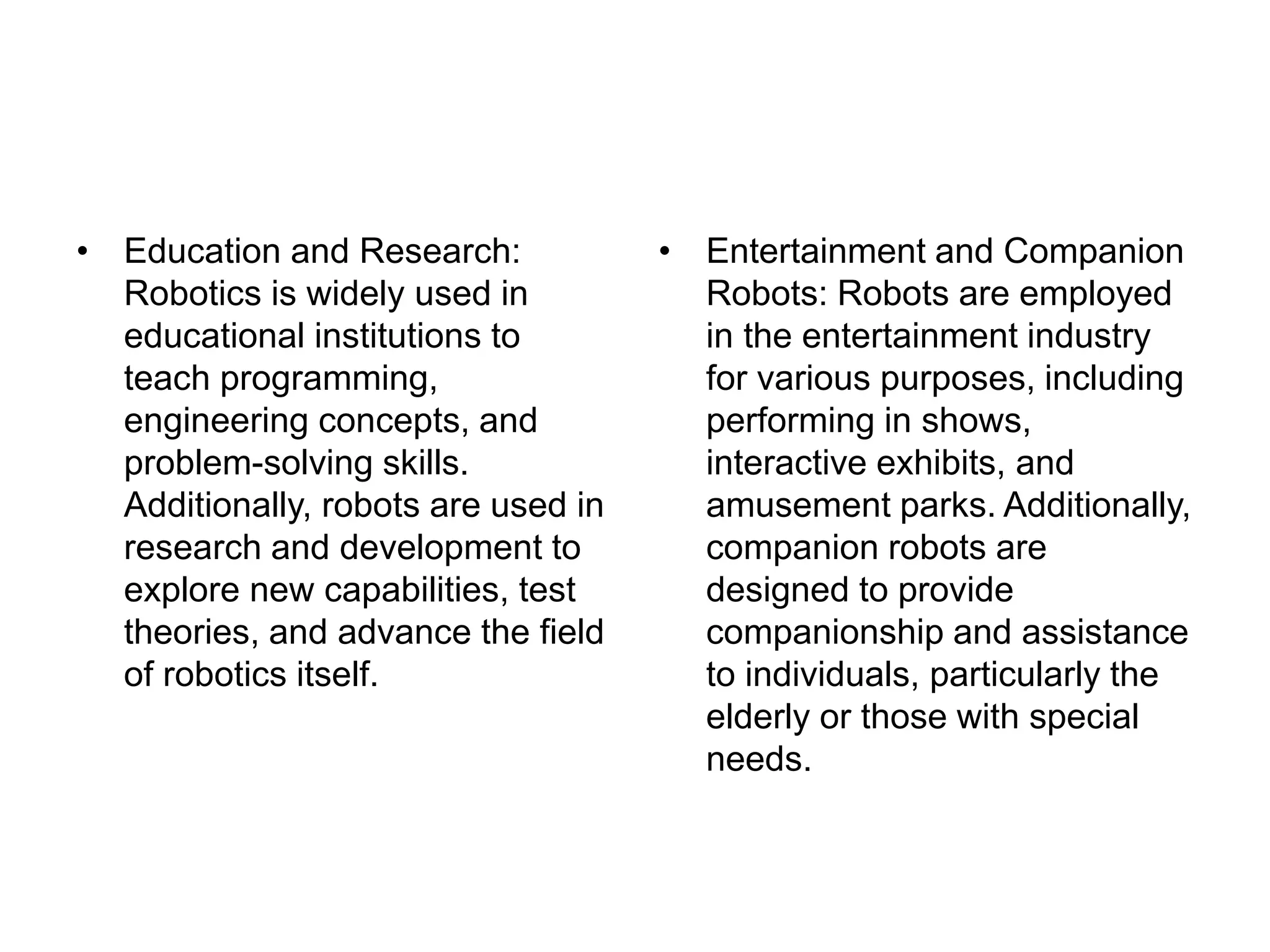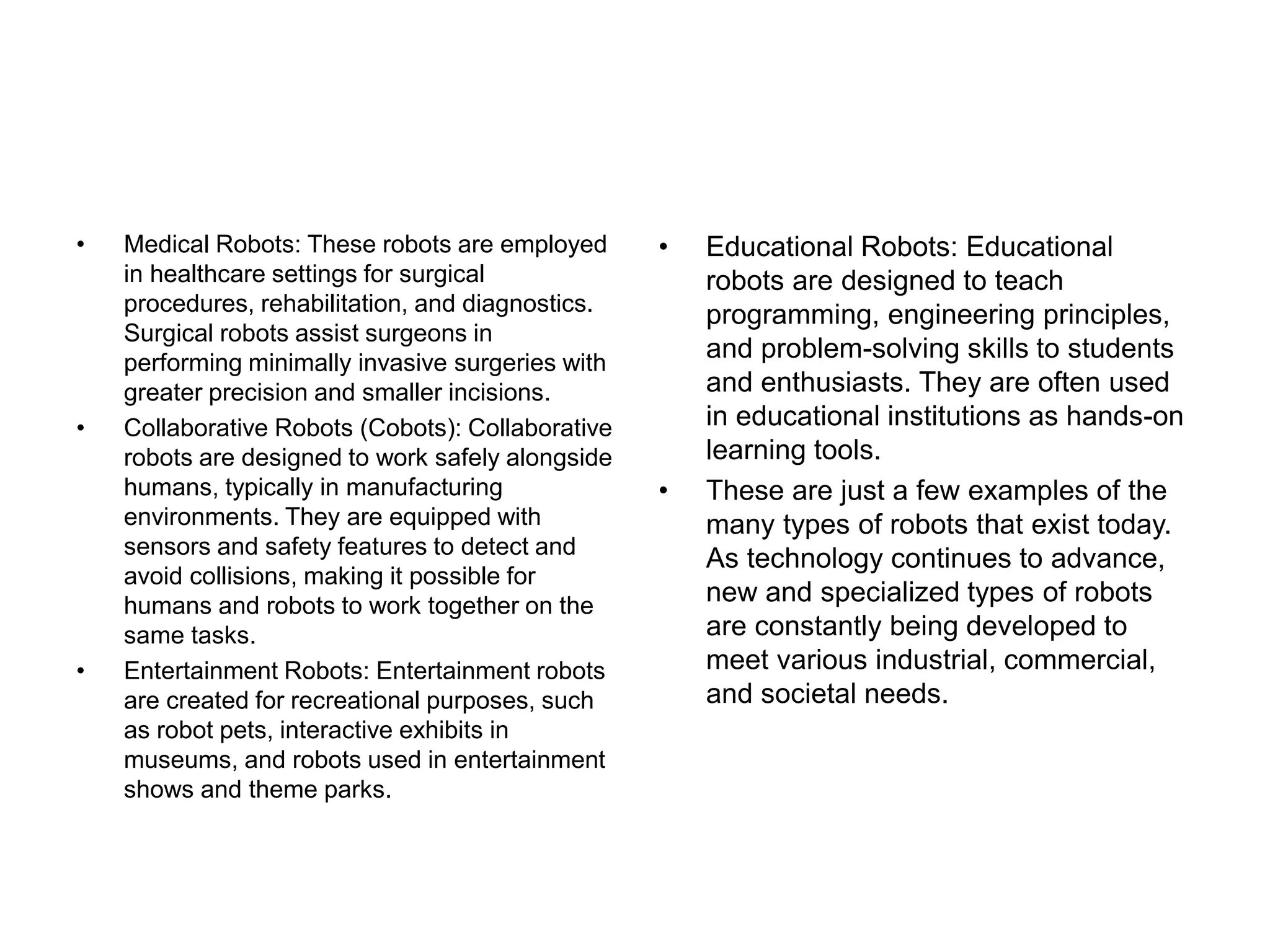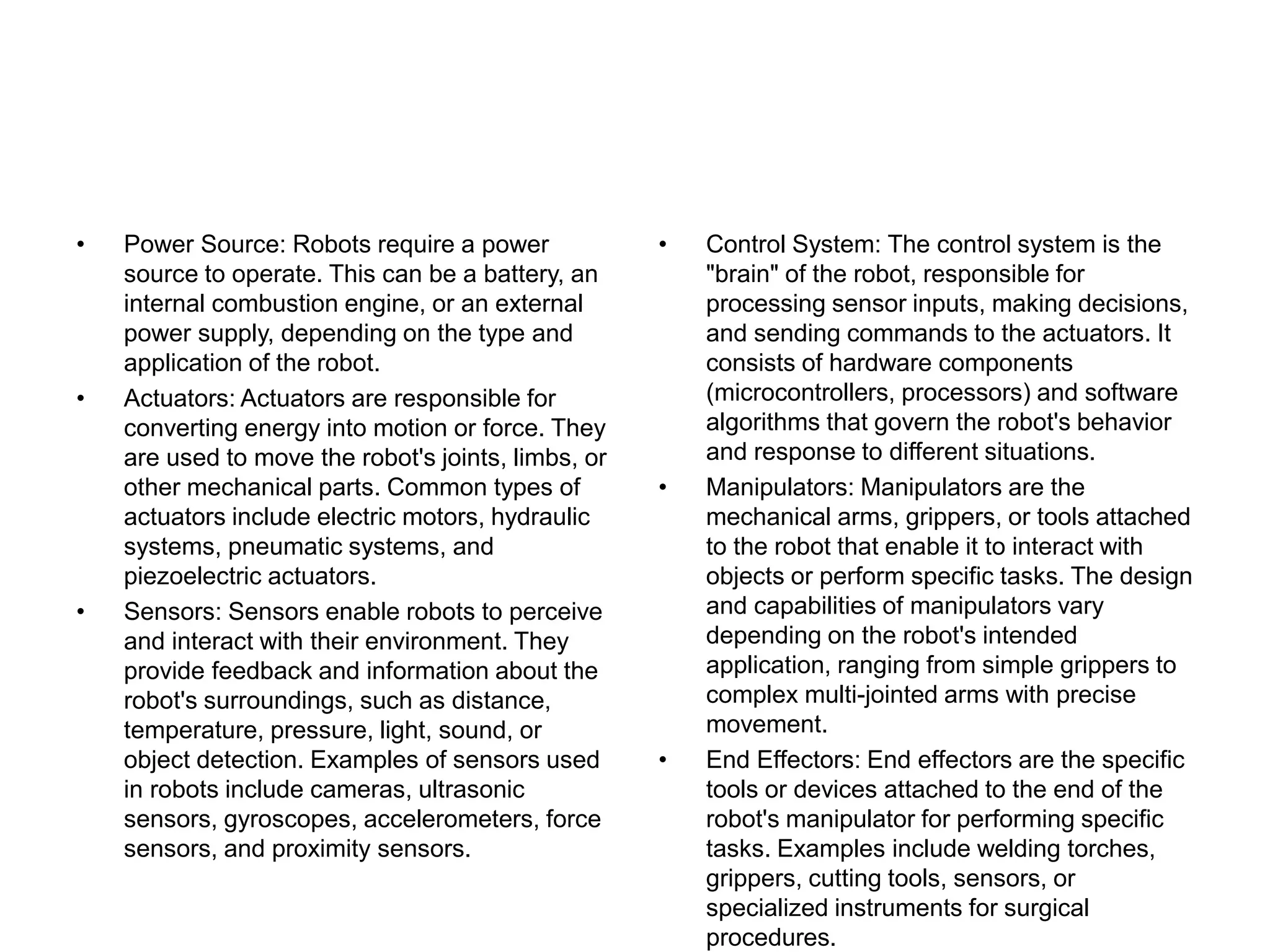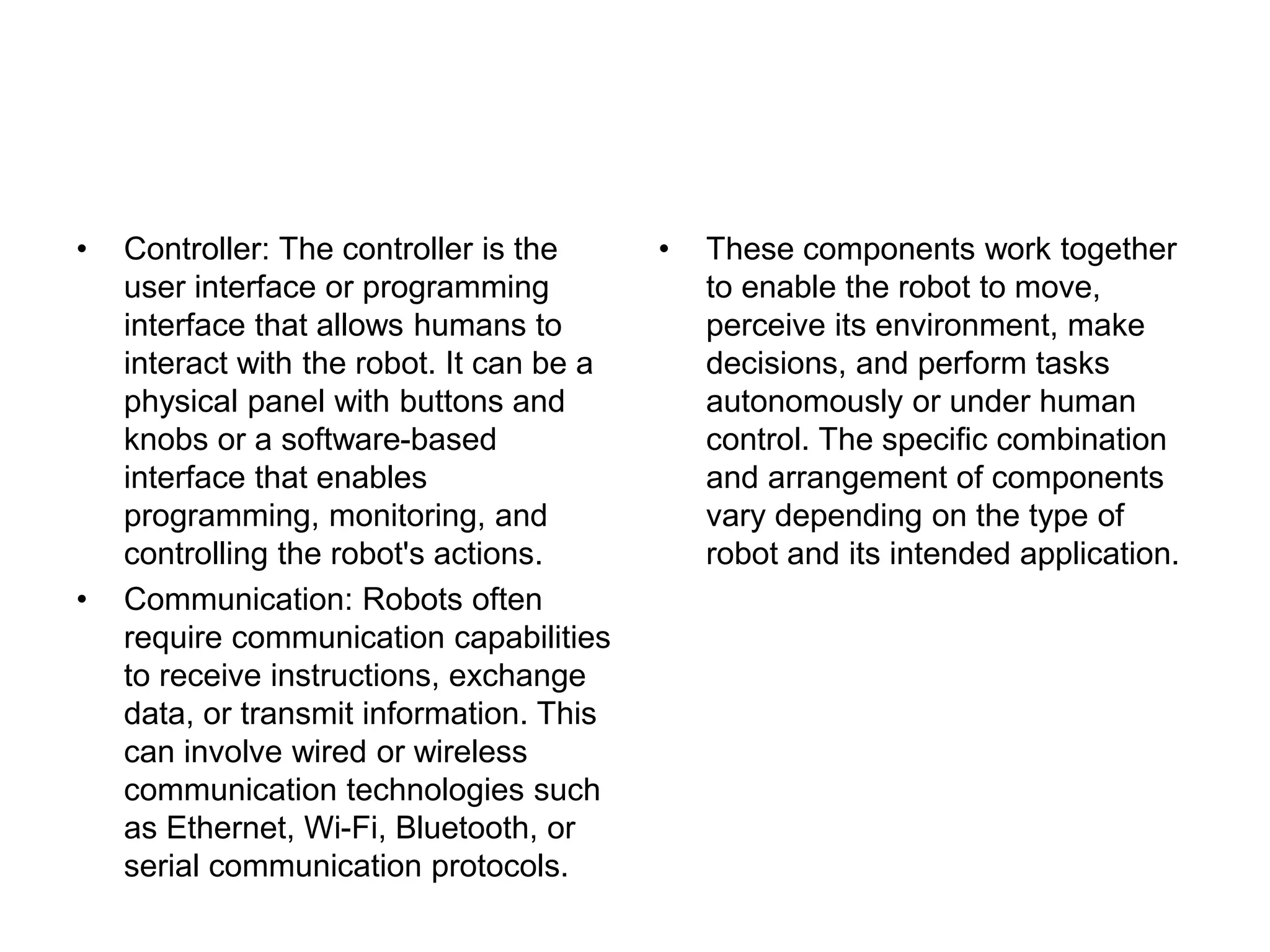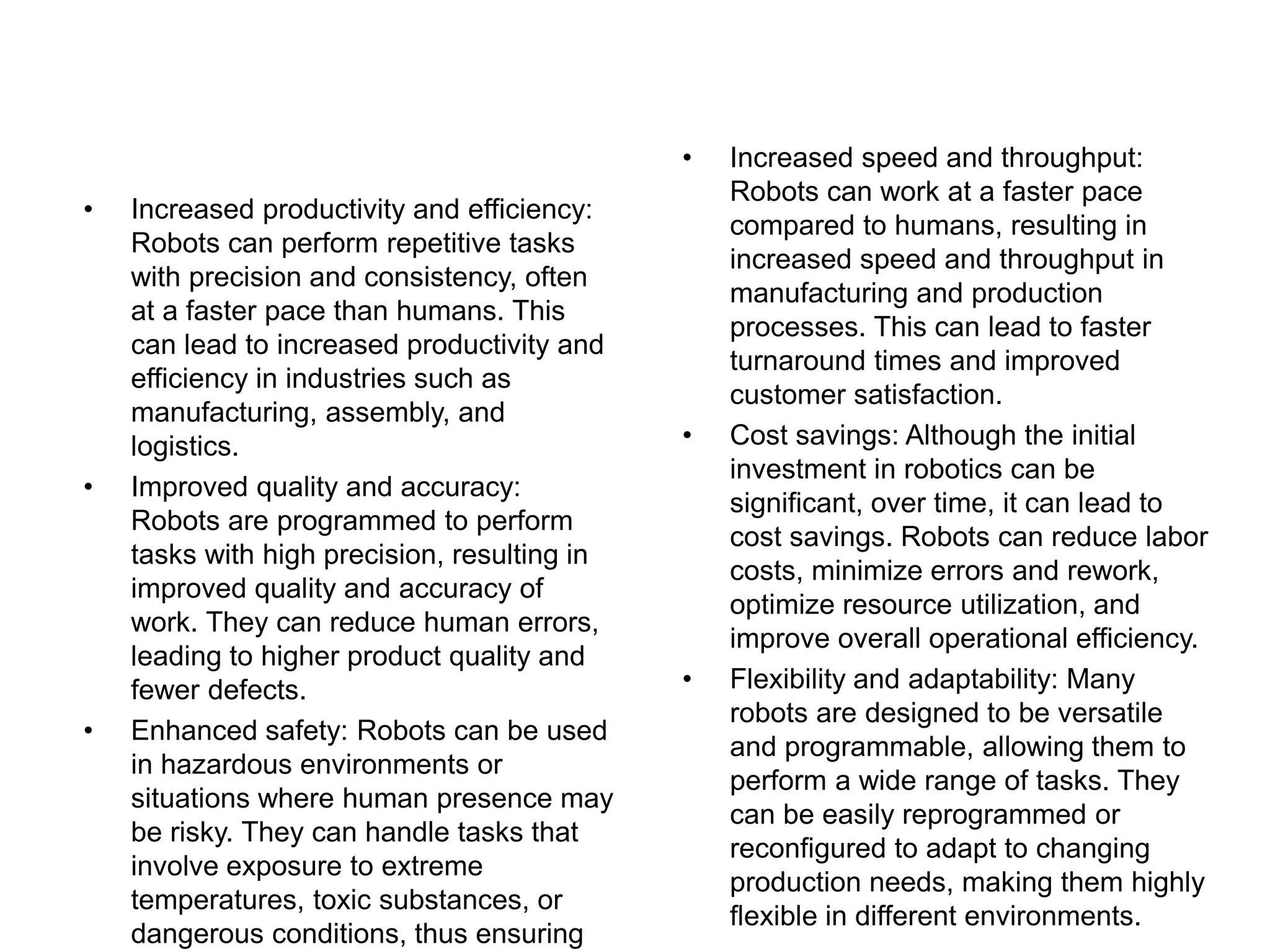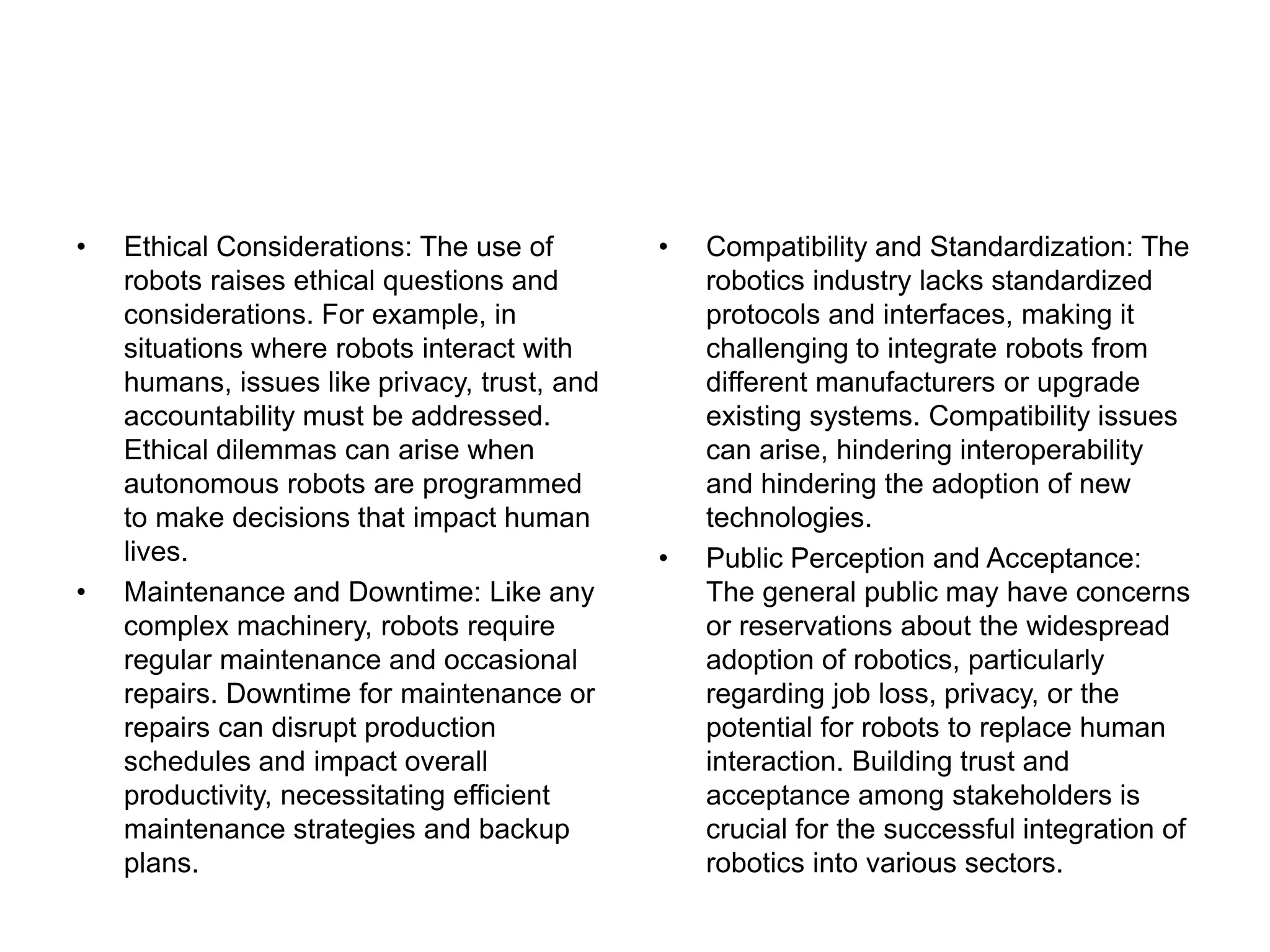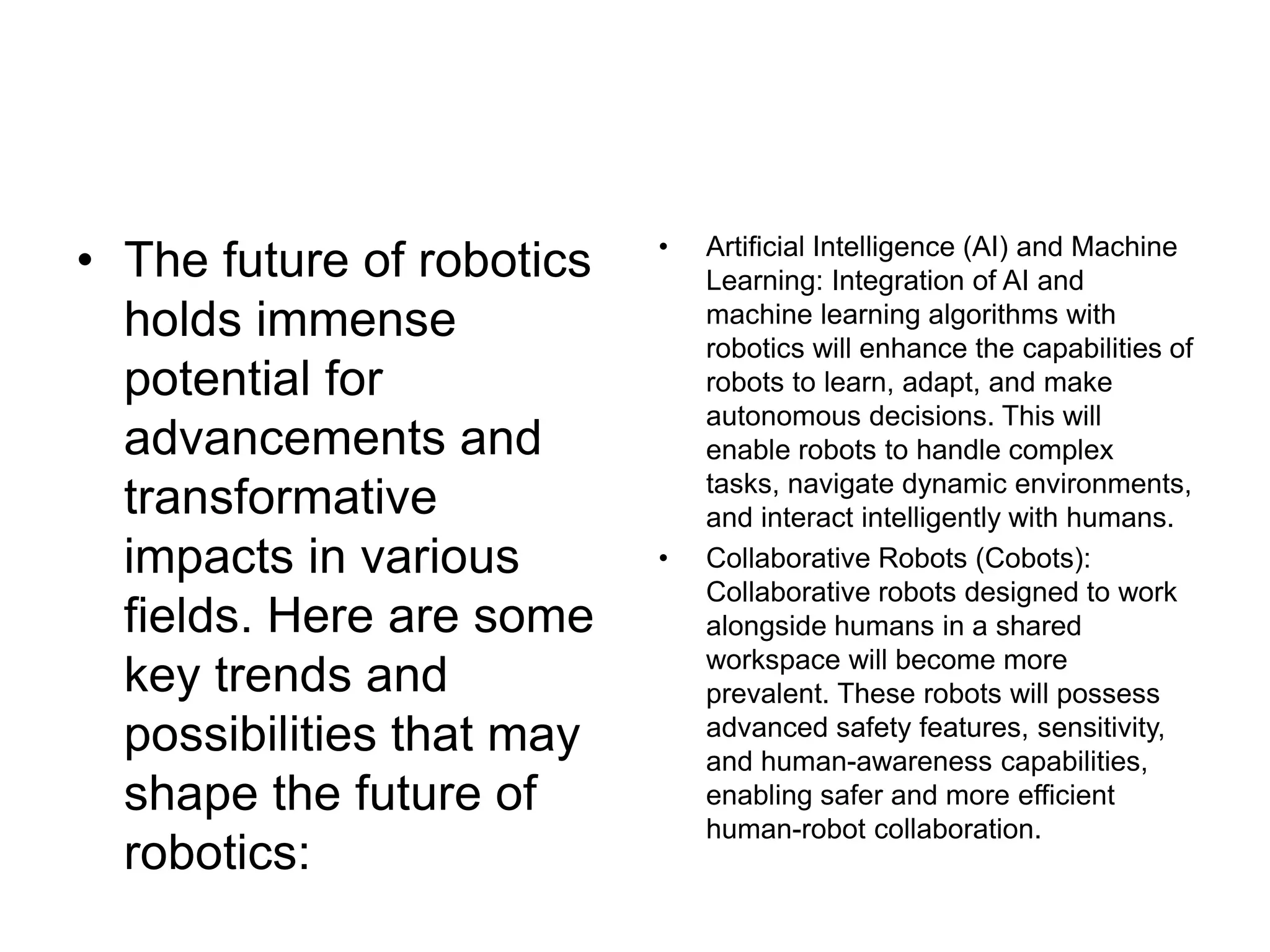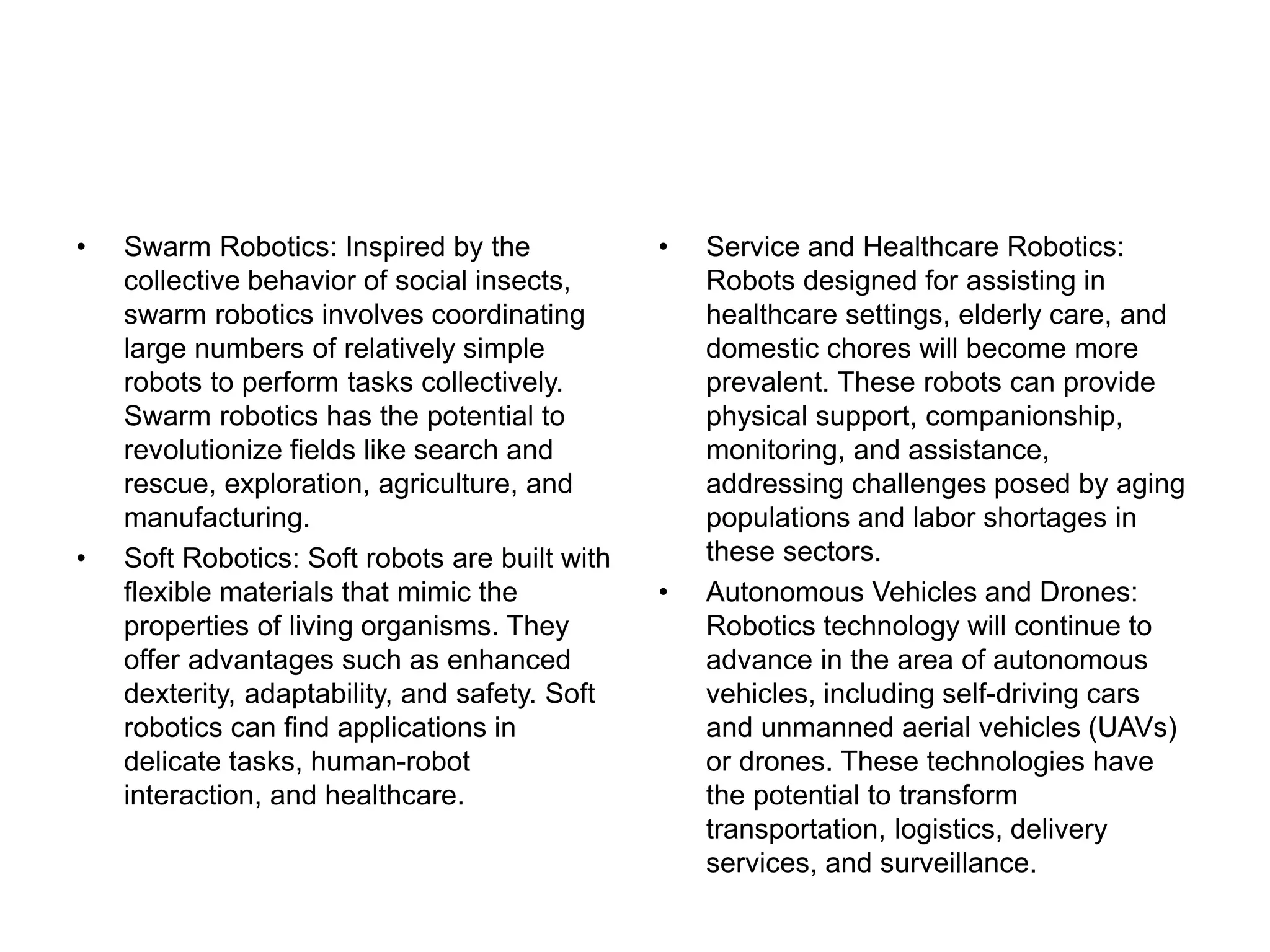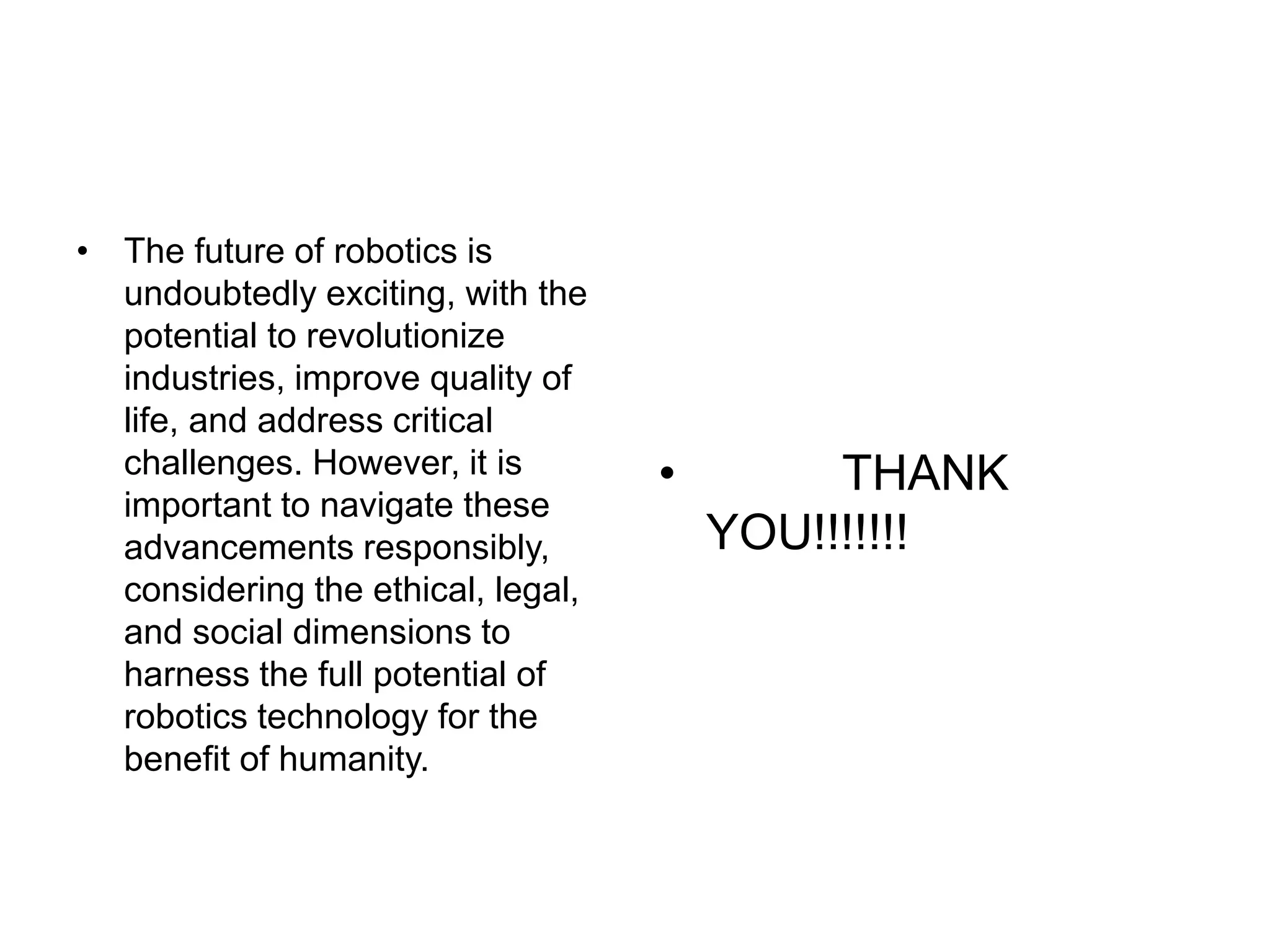This document discusses robotics and provides information on various topics related to the field. It begins by defining robotics and robots, and describes how robotics combines multiple engineering disciplines. It then discusses different types of robots and their applications in manufacturing, healthcare, agriculture, logistics, space exploration, defense, education, entertainment, and more. The document outlines key robot components and concludes by discussing both the benefits and challenges of robotics, as well as trends that may shape the future of robotics such as increased use of AI/machine learning, collaborative robots, swarm robotics, and roles in industry automation.
